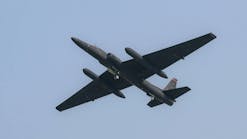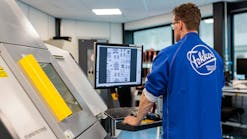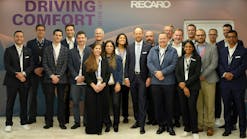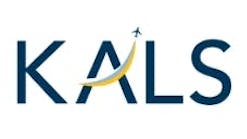The shortage of new skilled aircraft maintenance technicians (AMTs) continues to develop, with projections anticipating a growing discrepancy between the number of experienced workers retiring and new candidates ready to take their places.
According to the 2024 Pipleline Report by Aviation Technician Education Council (ATEC) and Oliver Wyman, “The current shortage is estimated at 9% and will reach nearly 20%—equivalent to about 25,000 certificated mechanics—by 2028...”
Implications for the aerospace industry
This shortage of qualified applicants could have a major impact on the aerospace industry, according to experts at Saxon Aerospace, a specialized recruitment agency in the aerospace sector.
For example, a report by Saxon Aerospace states, “With fewer technicians available, the existing workforce is shouldering heavier workloads. This increased pressure can lead to fatigue and burnout, which not only impacts employee well-being but also increases the risk of errors in critical maintenance tasks.”
Saxon Aerospace notes that companies may also turn to hiring less experienced staff who aren’t as familiar with safety and compliance standards, opening the door for safety issues during and after maintenance operations.
The report continues, “Aircraft require regular maintenance to remain airworthy. A shortage of AMTs can lead to delays in servicing, causing aircraft to spend more time on the ground instead of in the air. For airlines, this translates to schedule disruptions, dissatisfied passengers, and potential revenue loss.”
Saxon Aerospace also discusses how the aerospace industry undergoes constant innovation that could be stunted by the shortage. Their experts explain, “As airlines expand their fleets and introduce next-generation aircraft, the lack of available AMTs can become a bottleneck, slowing industry growth and innovation. Companies may hesitate to invest in new aircraft if they cannot secure the maintenance workforce needed to support them.”
Talent acquisition and technology
Aerospace employers and recruiting agencies have identified several challenges impacting the shortage in the AMT workforce, which grows in tandem with increasing demand for air travel.
Experts at Saxon Aerospace note that as current AMTs who have spent decades in the field age and retire, the openings they leave are often unable to be filled in a timely manner as employers struggle to find candidates with comparable levels of experience.
They state, “This demographic shift is creating a vacuum of expertise, particularly in high-demand areas like advanced aircraft systems and composite materials.”
Saxon Aerospace continues, identifying technological innovation in aviation tech as a contributing factor, “As aircraft technology becomes more advanced, the industry needs AMTs who are not only skilled in traditional maintenance but also proficient in areas like avionics, automation, and data analytics. This evolving skill set is challenging to find in the current workforce, exacerbating the shortage.”
Accessibility of education and training programs
Another key challenge offered by Saxon Aerospace is the limited access to AMT training and education programs.
They explain, “The pathway to becoming an AMT often requires specialized education and certification, which can be costly and time intensive. The availability of training programs is limited in many regions, restricting the flow of new talent into the field.”
Matt Panchal, a current AMT student pursuing an Airframe and Powerplant (A&P) license, discusses the barriers he encountered in terms of accessibility.
Panchal states, “The school I attend is quite far from where I live, and there aren’t many options to choose from. The second closest option is in Rockford, IL. Additionally, the high tuition fees for trade schools and the limited options for pursuing advanced degrees have also posed challenges.”
The ATEC also notes that many training programs for AMTs lack the resources needed to mitigate the shortage and support a sufficient pool of new candidates.
As the 2024 Pipleline Report says, “Many schools report maximum practical capacities that are below their allowable capacities due to shortages of instructors, facility space, or other resources. Designated Mechanic Examiner (DME) shortages are another key constraint. ATEC estimates that the industry needs 30% more DMEs just to account for the current flow of graduates.”
Lack of awareness about AMT careers
Saxon Aerospace notes, “Despite offering rewarding and well-paying careers, the role of an AMT often lacks visibility among younger generations. Many high school graduates are unaware of the opportunities available in aviation maintenance, instead opting for more widely advertised careers in other industries.”
Alex Jackson, operations specialist at Woodward, echoes this sentiment, “More visibility into roles like this could help…Showcasing the blend of technical challenge and creativity involved might spark more interest, especially among those who like problem-solving with a practical edge.”
As a current student at AIM Chicago, Matt Panchal shares how he discovered the career path by starting in a different area of aviation.
He says, “I started working in wheelchair assistance at United Ground Express, where I had the opportunity to interact with a variety of aviation professionals. During that time, I got to know a technician whose work intrigued me. This sparked my interest in aviation maintenance, and eventually, I fell in love with the idea of becoming an Aircraft Maintenance Technician (AMT). The technical challenges and the responsibility of ensuring safety in aviation really resonated with me, which motivated me to pursue this career path.”
How employers can help mitigate the shortage
While the shortage persists, employers can take several actions to attract skilled candidates to their organizations.
Increase publicity and specialized recruitment
Multiple sources outline the importance of increased publicity for roles in aircraft maintenance and manufacturing, citing it as a key way to appeal to more skilled workers.
For example, Alex Jackson entered the aviation industry as an associate machinist at Woodward, working his way up to an operations specialist role. Though neither Jackson’s educational nor personal background is in aviation, he discusses how he was attracted to his role by the opportunities for hands-on work and high-level thinking that the industry provides.
Jackson explains, “I was drawn to the variety and the opportunity to dive into different projects focused on efficiency and productivity. I enjoy being able to support machinists and engineers while also taking ownership of new ideas and innovations.”
He adds, “I earned a bachelor’s degree in an unrelated field and later completed a certificate program at a trade school. I was just excited to work with my hands and immerse myself in the technical side of machining.”
As noted by Saxon Aerospace, engineers and technicians who would be ideal for aviation careers often find work in other sectors with similarly high demand, like energy, manufacturing and automotive sectors, especially when those roles are better advertised.
At Bird Aviation, an MRO service provider based in Cyprus, Chief Personnel Officer Julia Pavlou emphasizes the need for specialized recruiting in this area.
Pavlou says, “Traditionally, aviation careers have emphasized pilot and cabin crew roles, often overshadowing the diverse and rewarding opportunities within MRO. I believe that by modernizing recruitment practices and enhancing vocational training programs, we can cultivate a more appealing image of the industry.”
Enhance educational programs
Julia Pavlou also discusses the significance of enhancing the educational programs meant to attract and prepare aspiring AMTs for their careers.
Pavlou says, “Collaborations between MRO organizations and educational institutions must be prioritized to develop curricula that align with current industry requirements.”
She continues, “Furthermore, increasing the availability of internships and co-op programs can offer students valuable firsthand experience, effectively bridging the gap between classroom learning and real-world application.”
Panchal highlights the dedication of his program’s staff when discussing his favorite aspects of AMT training.
Panchal shares, “I enjoy the dedication of the teachers, who are committed to helping students succeed. The school fosters a strong sense of community and collaboration among students, which creates an environment where I feel encouraged to explore my interests, build new skills, and grow both academically and personally.”
Panchal adds that his program covers a wide array of hands-on training opportunities. These include sheet metal work, troubleshooting avionics, composite structures, engine maintenance and more.
Highlight AMT career benefits
Another potential solution that Pavlou identifies is focusing on the lesser-known benefits of working in aircraft maintenance.
She explains, “Skilled technicians can command competitive salaries, often accompanied by benefits that highlight the critical nature of their roles.”
Pavlou also names the flexibility in work location that AMTs can find. She adds, “This geographic mobility allows young professionals to explore various cultures and environments while advancing their careers—a significant draw for those seeking both adventure and stability.”
While technological innovations sometimes pose challenges to AMT staff, Pavlou discusses how framing the opportunity to work hands on with emerging technologies as a benefit also functions as a solution for attracting new talent.
Pavlou says, “As new technologies rapidly emerge in aviation, technicians can engage in continuous learning and professional development. This evolving landscape not only keeps work engaging but also allows individuals to build fulfilling careers with significant long-term potential.”
Jackson supports this, talking about how he views this opportunity as a benefit of working in aviation.
He says, “Every day brings new challenges. We produce thousands of unique parts, so there’s always something new to figure out. I also enjoy learning about emerging technologies—and the people I work with make it even better.”
Jackson continues, “I appreciate the complexity and precision required to make aviation components. It pushes us to maintain extremely high standards in everything we do.”






